In handing down Western Australia’s latest budget last week, WA Treasurer Rita Saffioti announced $1.4 billion worth of measures aimed at addressing issues in the WA housing market.
With the Western Australian housing market seeing rapidly rising prices and a dire lack of rental housing, Committee for Economic Development of Australia (CEDA) chief economist Cassandra Winzar labelled the measures announced by Saffioti as “inadequate”.
Winzar says that one of the biggest problems facing the WA housing market is a lack of workers, along with high levels of regulation of the sector and complex local government planning and zoning regulations.
“A critical issue holding back progress on new home builds in WA, including social housing, is a lack of construction workforce”, Winzar said. “WA has the longest construction times in the country by some margin and workforce shortages are one of the key drivers of this”.
“We need to further address weak construction productivity by reducing barriers to firms growing and becoming more efficient, including reducing the high levels of regulation in the home construction sector and addressing complex planning and zoning regulations at local government level”, she said.
In other words, Western Australia’s housing crisis is a supply problem stemming from a shortage of workers and excessive bureaucracy.
As usual, there is no mention of Western Australia’s explosive population growth, which has seen the state’s population balloon by 245,000 people over the past three years, driven by net overseas migration of 161,000.

In growth rate terms, Western Australia’s population growth has averaged 2.9% over the past three calendar years—a truly explosive rate.
Western Australia’s high population growth driven by net overseas migration is forecast by the state government to continue into perpetuity.

The WA Tomorrow Report forecast that Western Australia’s population would increase by 776,000 (28%) between 2022 and 2036. Net overseas migration is expected to comprise nearly two-thirds of the state’s total population growth over the coming decade:
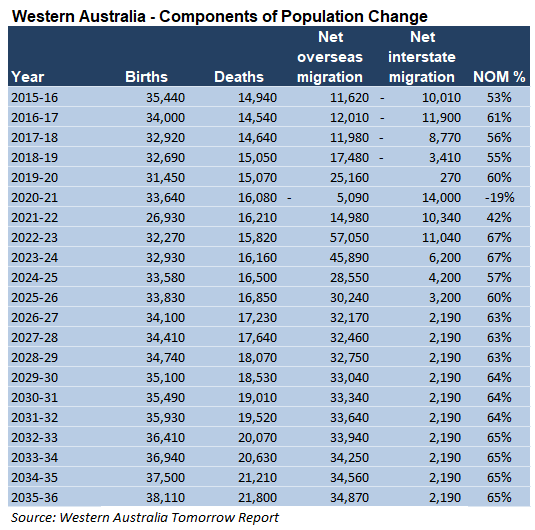
Of course, migrants have children, so they also contribute to natural increase (net births).
Meanwhile, residential completions are falling behind.

In the 2024 calendar year, only 20,500 homes were completed in Western Australia, despite a 70,300 rise in population.
As a result, anyone who blames a ‘lack of supply’ for Western Australia’s housing shortage is dishonest. The main issue is overwhelming migrant demand.
This circus is being reproduced at the national level, with Australia building more homes in the last 15 years than in the previous 15 years.
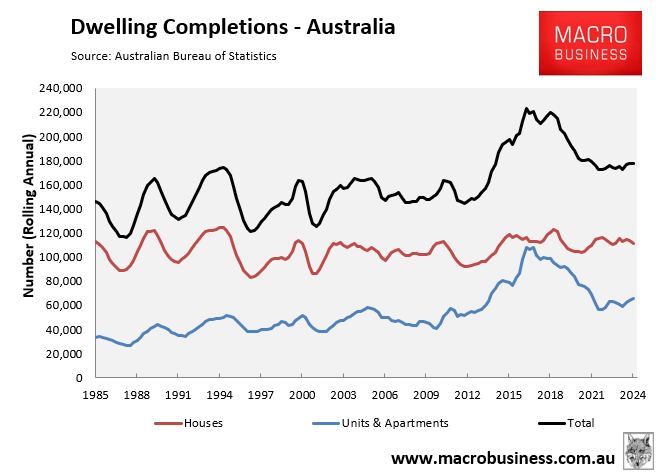
However, Australia’s population increased as net overseas migration more than doubled since 2005.

In the 60 years following World War II, Australia’s net overseas migration averaged 90,000 per year, exceeding 150,000 only twice.
Since 2005, Australia’s net overseas migration has averaged 231,000 per year, a 156% increase over the 60-year average post-World War II.
According to the most recent projections from the National Housing Supply and Affordability Council (NHSAC), Australia’s housing completions will be significantly lower than the Albanese government’s annual development target of 240,000 homes.
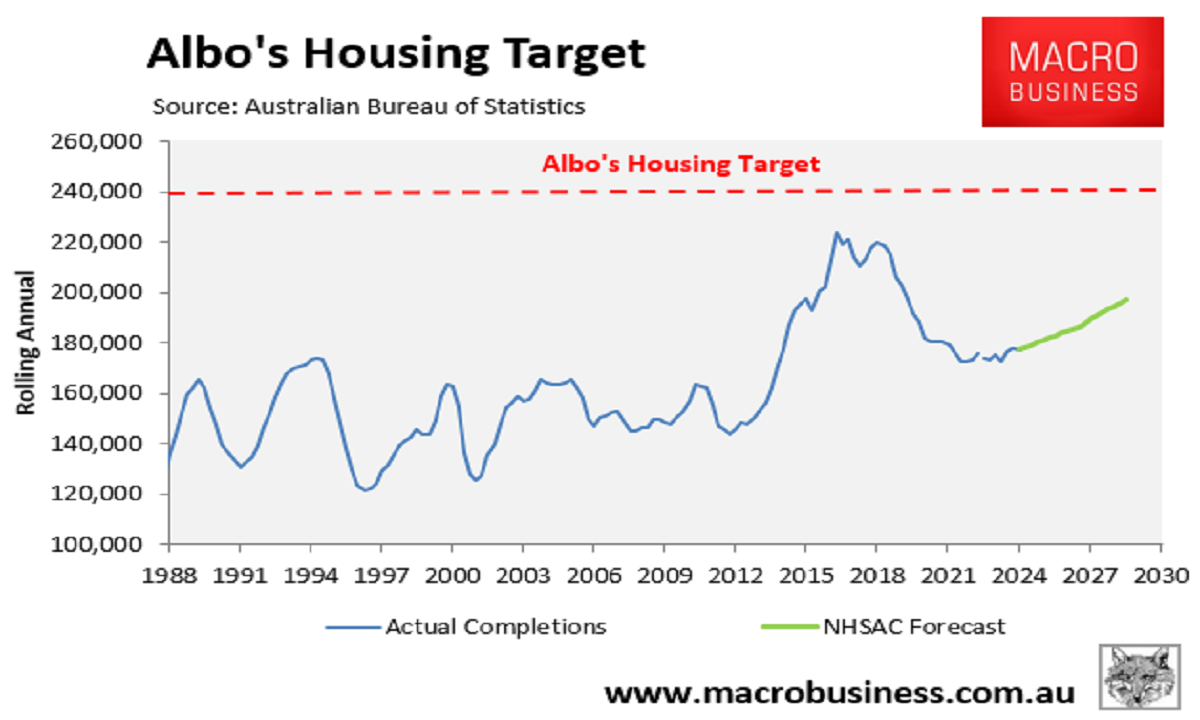
Meanwhile, NHSAC forecasts that population growth (read immigration) will continue to be historically high, causing Australia’s housing crisis to deteriorate by 79,000 houses over the next five years.
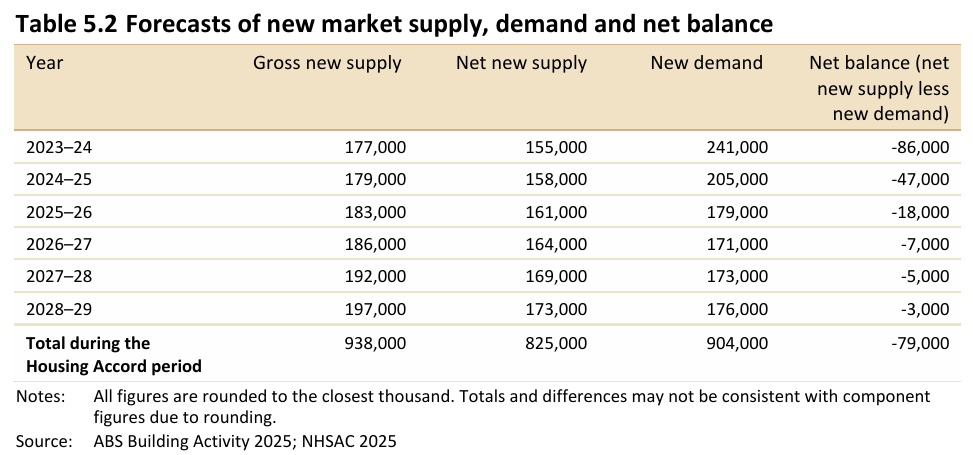
However, NHSAC’s own sensitivity stated that if Australia’s population grows by just 15% less than expected over the next five years, the country’s anticipated 79,000 housing shortage will become a 40,000 surplus:
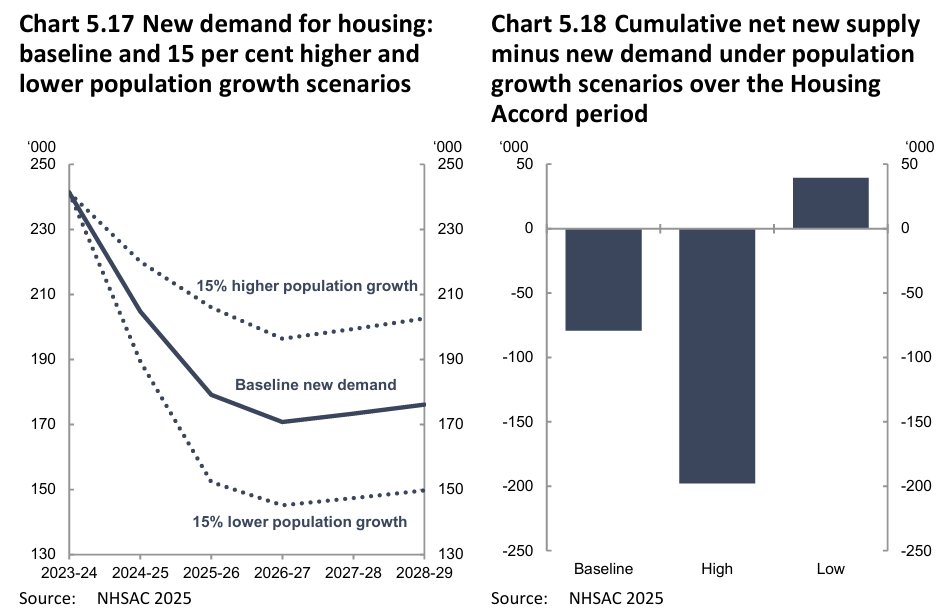
Therefore, it’s all about demand, not a ‘lack of supply’.
According to NHSAC’s sensitivity analysis, the key solution to Australia’s housing shortage is to control demand through the implementation of a moderate, sensible, and sustainable immigration program.

